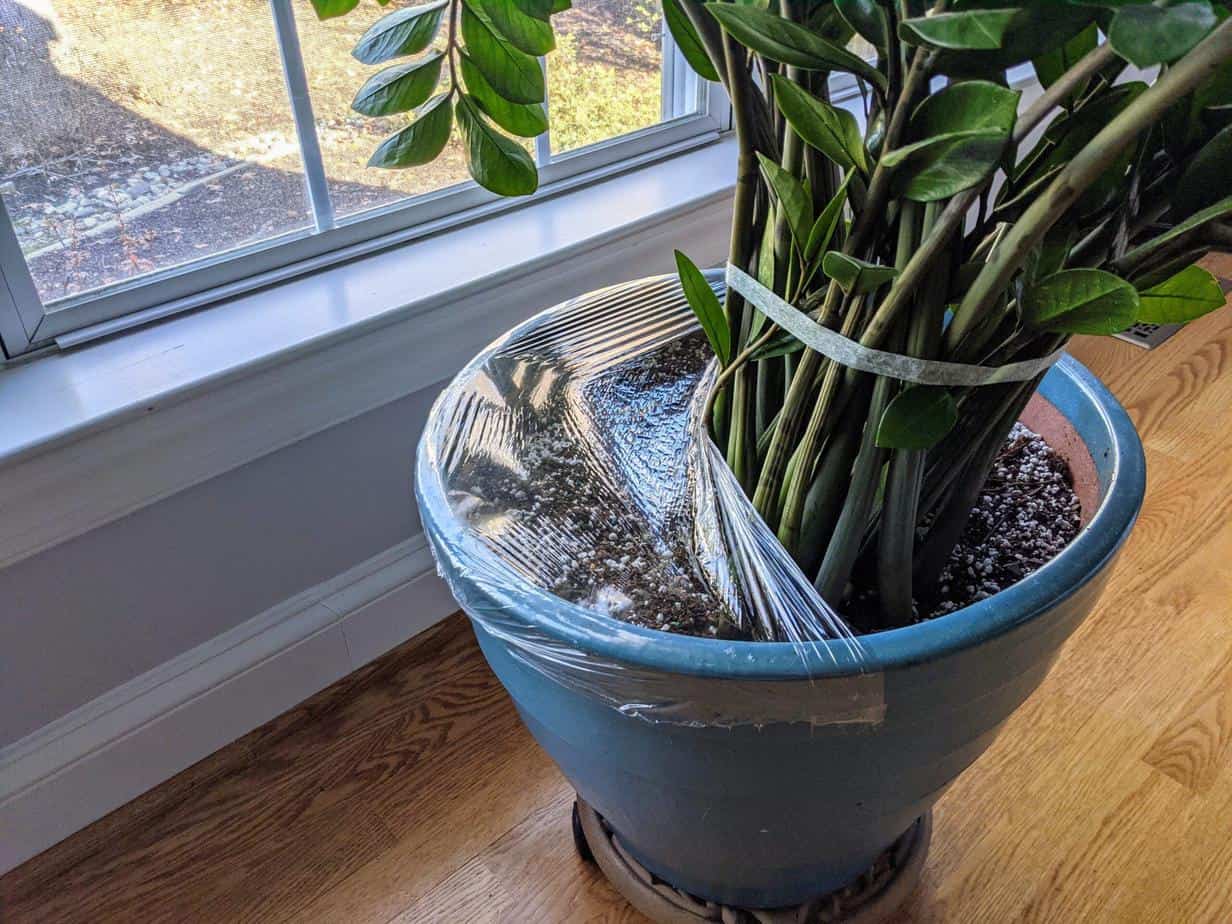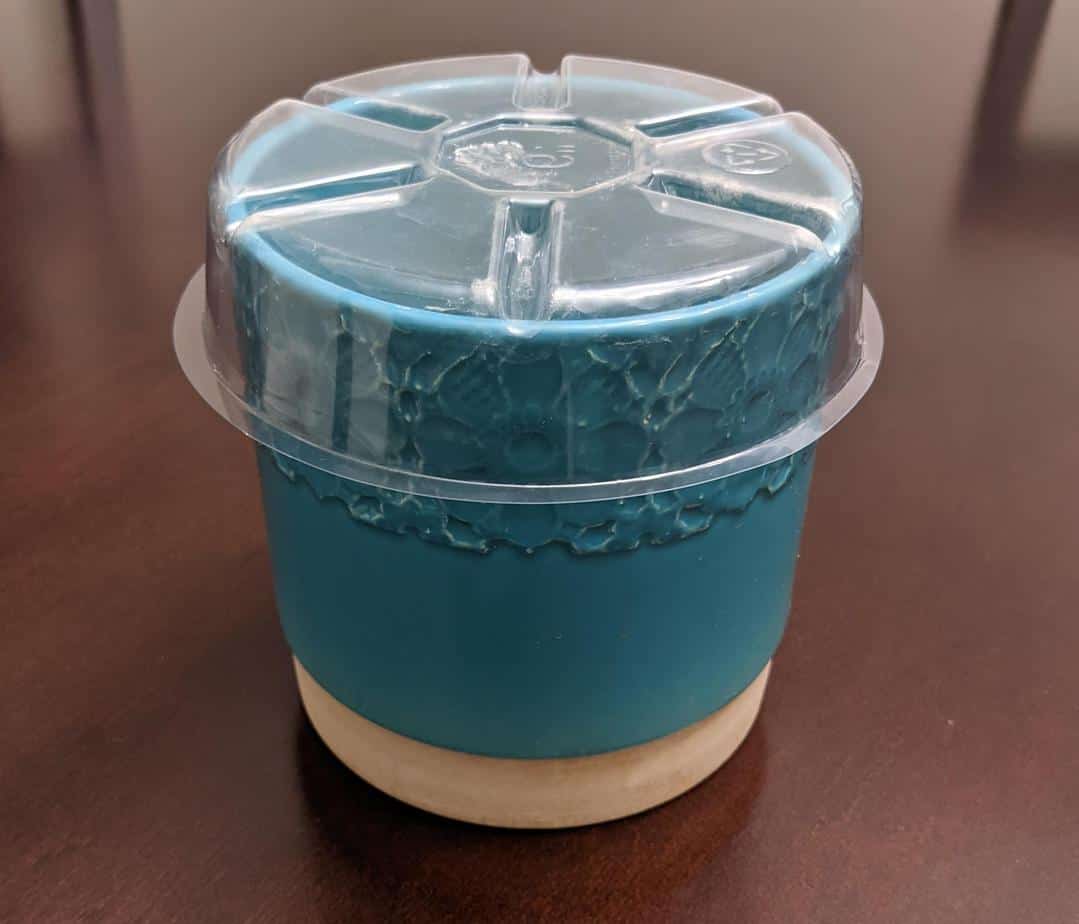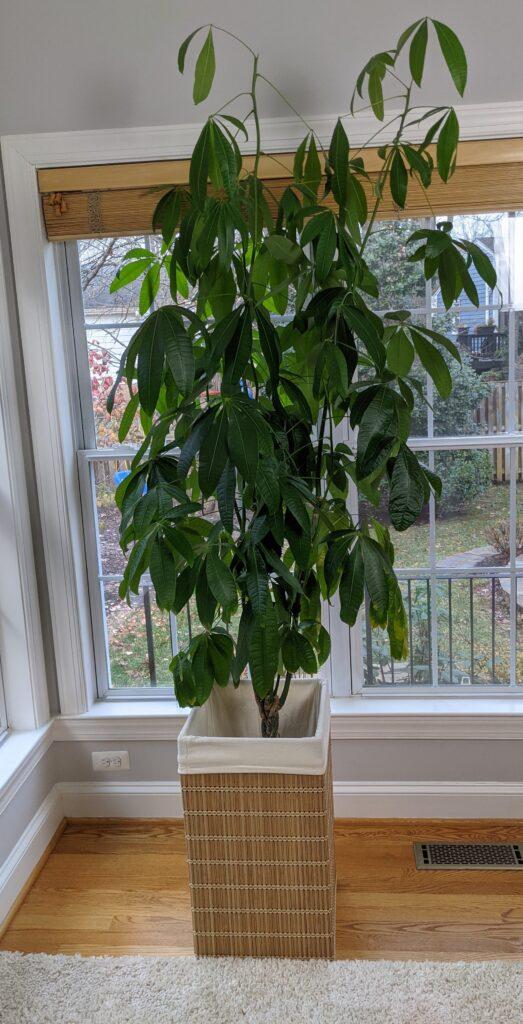The Four Best Ways to Baby Proof Your Houseplants
It’s such a joy when your little one shares your passion! Houseplants can be very interesting to toddlers, especially when they see us repeatedly caring for our indoor plants. It’s nice to let your little one help, but we still need to babyproof, or control, their access to your houseplants. This blog will share a handful of creative ways to help you keep your plants and your child safe. See my follow-up blog with six more ways to baby-proof houseplants.
Back to topKeeping Your Toddler Out of the Soil
If your toddler thinks that potting soil is delicious, like mine, then you’re probably looking for a way to block their access to the soil. Maybe your child has more discerning taste, but they still find it fun to play with the dirt and spread it far and wide. Here are some ideas to help you avoid mud pies and dirt-strewn floors while still preserving some of the aesthetic appeal of your houseplant and pot.
Back to topBaby proof your houseplants with cling wrap on the top of your pot.
This idea is pretty self-explanatory. I find that using two sheets is the cleanest way to work around the plant itself. Cling wrap will stick to some pot mediums better than others, so you may need some clear tape to help keep it secure.

Cling wrapping the top of your pot is great because it’s cheap. In fact, most of you already have the materials on hand. It’s easy. Okay, cling wrap is kind of a pain to work with, but you know how to use it. It’s clear, so it minimizes the impact on your aesthetic. Cling wrap can work around most shapes of houseplant and pot.
Cling wrap may not be the best solution for your plant and child though. For starters, it’s not incredibly sturdy. Older toddlers can definitely defeat a cling wrap blockade. It will also be harder to water and monitor soil moisture, so if that is already a struggle for you, consider some of the other suggestions below.
Back to topCut a plastic drip tray to fit your pot.
This idea is very similar to using cling wrap. Drip trays can be cut to fit around the base of your plant. They are easily cut with normal household scissors, but your cuts may look nicer if you use an x-acto knife. This method works best for plants that have a single trunk or stem, for example, a fiddle leaf fig. There are two options for trimming your tray. You could select a drip tray that will completely cover the top of your pot, which may make lifting and watering easier. The alternative is to trim the tray to fit completely inside of the pot. This may provide a more effective barrier but may make watering more difficult.

The drip tray method is another economical solution to baby-proof houseplants. You can typically find these trays for around a dollar at your local garden or home improvement store. The trays are easy to cut with household scissors. They are somewhat rigid, so they offer better and more durable protection compared to cling wrap. Drip trays are typically clear, which preserves the visual appeal of your plant and pot.
A drip tray can hold up to most toddlers. However, if you have a copycat they may learn how to lift the tray if they watch you water your plant. The drip tray will also keep your soil from drying out as quickly as it normally would. That can be a good or bad thing depending on the person. It’s something you should consider though as it may change your plant watering routine. Drip trays are typically circular, so it may take more work to fit a square or other odd-shaped pots.
Back to topPlant pot covers.
Plant pot covers are sold at garden or home improvement stores and your favorite online retailers. These covers are similar to the drip tray method where you cut the pot cover to fit around your plant and completely inside the pot. These covers are designed to be trimmed with household scissors. The trimmed product can be secured to the soil with the small stakes that are provided with the product.
The plant pot covers have a grid design. The grid makes it far easier to water and monitor your soil moisture compared to the cling and drip tray options. In fact, once you set it you should not need to move it. It’s also designed to blend in with your soil, making for the best aesthetic option. Plant pot covers are more expensive than the earlier options, but it’s not prohibitively expensive. Be sure to make your cuts carefully on this product.
Back to topBaby proof houseplants with a tall outer pot.
You can place your plant, pot and all, into a larger outer pot with tall sides to block access to soil. You should measure your plant, pot, and also have an idea of the minimum height that will keep your toddler out of the soil. This method will work best for plants that are tall because your outer pot will cover more of your plant vertically. A relatively inexpensive example is that I use this bamboo laundry hamper. I like this option because the sides are rigid, which offers better protection. The houseplant I used it for is a pachira aquatic, also called money tree. It completely blocks my toddler from grabbing soil. I actually like the look, but I understand it may not be for everyone. Another option is a tall woven basket, which are very popular plant containers right now.

The tall outer pot is a low effort solution. You determine your measurements and shop for something that fits the description. It also gives you an opportunity to add something new and fun to your décor that is no doubt slowly being overtaken by toys!
These outer pots can be expensive depending on what you pick. They should not affect the ability of your soil to dry out. However, they can make it more difficult to water using traditional methods. For example, I can’t fit my watering can in the bamboo hamper, so I just use a drinking glass to pour water in. It’s worth noting it may change your plant care routine.
This blog focused on baby-proofing the soil of your houseplants. There are some inexpensive DIY options and some off-the-shelf shelf options for those with less time. These options help preserve the visual appeal of your houseplants, which is a major reason we have them because we like to look at them! Share your creative solutions for keeping your toddler out of your plants in the comments section.
Back to top
Add new comment